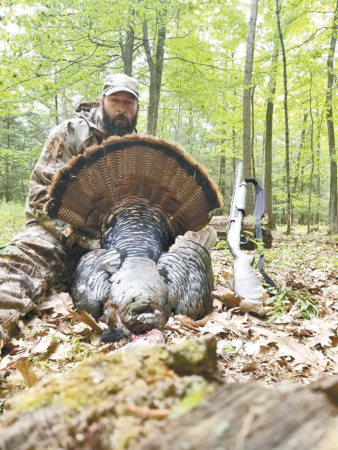Another spring gobbler season has come to an end, and as always, some hunters have managed to fill their tags, and others, despite their efforts, were not successful. I’m sure in some instances there are hunters who, after their first few times out, haven’t seen or even heard a gobbler, and they gave up thinking it’s too late to claim success. Actually, more and more hunters are finding out, however, that the late season can still be very productive.
I was one of those spring turkey hunters who used to think you had to bag that bird early or your chances of tagging out were nearly gone, but several years ago, I found out otherwise.
I hunted hard the first couple of weeks after a good gobbler, but despite all my efforts, the gobbler would not leave the couple of hens that I saw him with each morning — he completely ignored my calls. After several attempts, I got discouraged and gave up. Finally, on the last day of the spring season, out of desperation, I thought I would give it one more chance. I went back to the same location where I had seen the gobbler early on, and I sat up in the corner of the wooded field.
Things were a lot greener on this late-season hunt, but I set up and made some soft yelps on my box call, for starters. It was a nice warm morning, and I wasn’t expecting much, but I thought, if nothing else, it would be a relaxing time out, even if I didn’t see or hear anything.
Needless to say, I was shocked when I caught movement coming out of the grown-over fence row a couple hundred yards away — it was that big gobbler, and he was heading right for me. I carefully eased my 12-gauge into position, and ten minutes later, I bagged my biggest ever gobbler.
I was reminded of my successful last-minute hunt when my son sent me a photo of the big gobbler he nailed on the next to the last day of this year’s season. Like a lot of hunters, he had been busy with work and trying to get his son out on Saturdays, and he was unable to get out himself. On that last Friday, he finally decided to make a run at it even though he had not been seeing or hearing any birds in the area.
It was mid-morning by the time he got out and set up, and after a few soft yelps on his slate call, he sat back, not really expecting anything, but a gobble changed everything. It wasn’t long until he spotted two nice gobblers making their way in his direction. A soft yelp with the mouth call, and it wasn’t long until they were within 25 yards. What appeared to be the larger of the two birds — and all fanned out — went behind a tree; not wanting to miss the opportunity, he took the gobbler that was only a few steps behind the other bird. The ten-inch beard and three-quarter-inch spurs were not a disappointment.
Obviously, the late season can be very productive. Think about it; many of the hens are on their nests and no longer available to a big gobbler still interested in making love. Add to that; there are probably fewer hunters stirring up birds in the late season. Another plus is that it’s easier for a hunter to move into and around different areas without being spotted due to the increased green vegetation. Don’t rule out that last week — it could produce one of your best gobblers.





Leave a Comment
Your email address will not be published. Required fields are marked with *